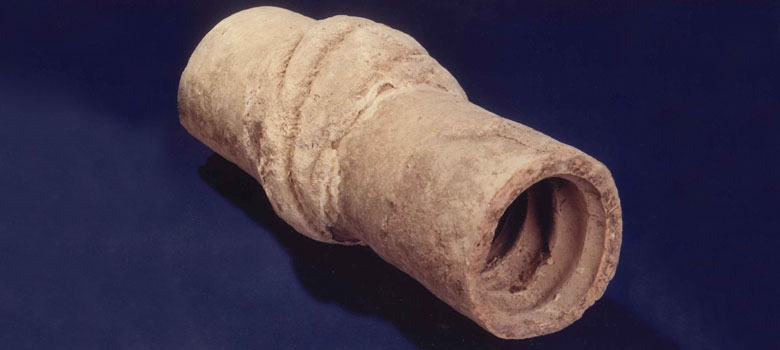Durability of Clay Pipes
Clay pipes are extremely durable, as has been proven over periods of hundreds and even thousands of years in service.
Clay pipes have long been the preferred option in a broad range of aggressive conditions and can carry all effluents acceptable to sewage treatment plants. They are unaffected by the presences of hydrogen sulphide in the pipeline and sulphates in the ground. At temperatures found in public sewers in the UK they are resistant to damage from effluents and groundwater over the PH range 2-12.
Although clay pipes are rigid and do not distort under load, modern clay systems ensure a rigid pipeline with flexible joints capable of compensating for settlement after laying. Pipes and couplings are temperature resistant and will not distort, soften or embrittle even when subject to temperatures well above those experienced in normal service. Special seals are available to meet the challenges of abnormally aggressive environments.
As a result of the ability of clay drainage to withstand these aggressive conditions, it is eminently suitable to use on reclaimed industrial or commercial development sites. Clayware has excellent resistance to abrasion and is unaffected by pipe cleaning operations, particularly rodding and high pressure jetting and therefore for all of the above reasons, for design and ‘lifetime’ costing purposes, a clay drainage system can be considered to have unlimited life.
It is essential for the designer and owner to understand the long term life implications of pipe material selection and this selection process is more complicated than in the past. New materials are developed or used in new ways to make pipes. Different resins or classifications of cell structure must be understood and specified to achieve expected performance. In some cases, materials can be coatings or relatively thin layers that rely on adherence to the main pipe body to reach expected performance.
The references below are provided to give basis to the material selection process as related to life expectancy; comments are derived from a wide range of research papers- details available on request.
Sewer Pipe
|
Strength
|
Initial Internal
|
Initial
|
Design
|
Typical Seal
|
Longevity,
|
| GRP, glass fibers, sand, polyester |
50% of initial, loss of cross linking naturally occurs – accelerated by stress and corrosion elements. Water damage |
Good, 1 pH – 10 pH (based upon 1.15 yr. extrapolation at 22ᴼ C.); deteriorates with temperature increase |
Good, 1 pH – 10 pH (based upon 1.15 yr. extrapolation at 22ᴼ C.); deteriorates with temperature increase |
Flexible | >2bar | Poor, extrapolated from 50% strength deterioration at 50 years, corrosion acceleration with stress and molecule linking failures with age |
| GRP, glass fibers, sand, polyester, vinyl ester interior coating |
50% of initial, loss of cross linking naturally occurs – accelerated by stress and corrosion elements |
Very good, 1 pH – 10 pH (based upon 1.15 yr. extrapolation at 22ᴼ C.); deteriorates with temperature increase |
Very Good, 1 pH – 10 pH (based upon 1.15 yr. extrapolation at 22ᴼ C.); deteriorates with temperature increase |
Flexible | >2bar | Poor, extrapolated from 50% strength deterioration at 50 years, corrosion acceleration with stress and molecule linking failures with age |
| HDPE, high density polyethylene |
70% to 80% loss of strength |
Very good, but subject to deterioration in chemicals or high temperature |
Very good, but subject to deterioration in contaminated soils including benzene or high temperature |
Flexible | Fused or push joints varying pressure ratings |
Poor, extrapolated from 70% to 80% strength deterioration at 50 years; corrosion acceleration from stress and molecule linking failure with age |
| PVC, polyvinyl chloride |
65% to 80% loss of strength |
Very good, but subject to deterioration in chemicals or high temperature |
Very good, but subject to deterioration in contaminated soils including benzene or high temperature |
Flexible | >1bar | Poor, extrapolated from 65% to 80% strength deterioration at 50 years; corrosion acceleration from stress and molecule linking failure with age |
| Polymer Concrete, graded sand and gravel, polyester |
50% of initial, loss of cross linking naturally occurs – accelerated by stress and corrosion elements |
Good, 1 pH – 10 pH (based upon 1.15 yr. extrapolation at 22ᴼC.); deteriorates with temperature increase |
Good, 1 pH – 10 pH (based upon 1.15 yr. extrapolation at 22 ᴼ C.); deteriorates with temperature increase |
Rigid | >2bar | Poor, extrapolated from 50% strength deterioration at 50 years; corrosion acceleration with stress and molecule linking failures with age |
| Reinforced Concrete, sand, aggregates and cement |
100%, less corrosion of concrete & rebar |
Poor, in corrosive conditions |
Poor, in corrosive conditions |
Rigid | >1bar | Poor, in applications with internal or external corrosion environment |
| Reinforced Concrete with Plastic Liner, concrete, sand, aggregates and cement with a cast plastic liner |
100%, less corrosion of concrete & rebar |
Moderate, liners have shown short and moderate life <50 years |
Poor, in corrosive conditions |
Rigid | >1bar | Poor, in applications with internal or external corrosion environment |
| Steel, when used as carrier pipe |
100% where there are no corrosion effects |
Very poor | Very poor | Flexible | Welded | Poor, if corrosion possible. Good, if no corrosion present |
| Vitrified Clay, high temperature fired structural ceramic |
100% | Excellent, pH 0 to pH 14 |
Excellent, pH 0 to pH 14 |
Rigid | >> 2bar 10 psi, >17 psi depending upon manufacturer and joint type |
Excellent, demonstrated long life |

